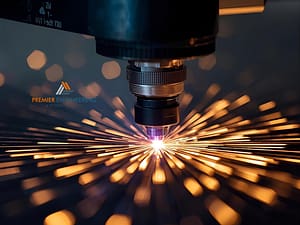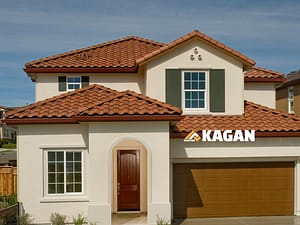Prototyping is a key part of developing any product. It’s about making an early model of your idea to test and improve it before moving to full production. This step helps you find design flaws, refine how it works, and make sure the final product meets all the needed standards. Prototyping gives designers and engineers a chance to explore ideas and make changes before committing to the final version.
How CNC Routing and Machining Help with Prototyping
CNC routing and machining are modern tools that make prototyping faster and more precise. These technologies use computer-guided machines to cut, shape, and finish materials exactly as designed. CNC tools help create high-quality prototypes quickly, speeding up the design process by allowing more changes and improvements in less time.
CNC Laser Cutting in Prototyping
What is CNC Laser Cutting?
CNC laser cutting uses a high-powered laser to cut or engrave materials with extreme accuracy. The laser is controlled by a computer, which ensures every cut or mark is made precisely. This method is great for materials like metal, plastic, and more, allowing for detailed designs with very little waste.
Differences Between CNC Routing, Machining, and Laser Cutting
CNC routing and machining use physical tools to cut and shape materials, while CNC laser cutting uses a laser beam. Laser cutting offers better precision for complex shapes and doesn’t need to physically touch the material, making it ideal for detailed work that might be harder to achieve with traditional tools.
Choosing Materials for CNC Prototyping
Popular Materials: Metals, Plastics, Woods
CNC machines can work with many different materials, each having its own benefits:
- Metals: Aluminium, steel, and brass are strong and durable, making them great for prototypes that need strength.
- Plastics: Acrylic, ABS, and PVC are lightweight and easy to shape, perfect for flexible designs.
- Woods: Plywood, MDF, and hardwoods offer workability and a natural look, often used for aesthetic prototypes.
Picking the Right Material
The best material for your prototype depends on what you need from it. Think about how strong, lightweight, or cost-effective the material should be. Working with experts in CNC routing and machining can help you pick the right material for your specific project.
The Prototyping Process with CNC Technology
Preparing the CNC Machine and Material
Once the design is ready, the appropriate material is selected and prepared for machining. The CNC machine is set up with the necessary tools and parameters to execute the design. This preparation ensures that the machining process is efficient and accurate.
Executing the CNC Routing, Machining, or Laser Cutting
With the machine and material ready, the CNC routing, machining, or laser cutting process begins. The CNC machine follows the programmed instructions to cut, shape, and finish the material according to the design specifications. This automated process ensures high precision and consistency in the prototype.
Advantages of CNC Prototyping Over Traditional Methods
Precision and Consistency
CNC prototyping offers unparalleled precision and consistency compared to traditional methods. The computer-controlled process ensures that each prototype is produced with exact specifications, reducing the risk of human error and variations.
Reduced Turnaround Time
The speed and efficiency of CNC machines significantly reduce the time required to produce prototypes. This faster turnaround allows for quicker design iterations and accelerates the overall product development cycle, giving businesses a competitive edge in bringing new products to market.
Choosing the Right CNC Service Provider
Experience and Expertise in Prototyping
When selecting a CNC service provider for your prototyping needs, it’s crucial to consider their experience and expertise in the field. Look for a provider with a proven track record in delivering high-quality prototypes across various industries. Experienced providers are more likely to understand the intricacies of different materials and processes, ensuring that your prototypes meet the highest standards.
Range of Services: Routing, Machining, Laser Cutting
A comprehensive CNC service provider should offer a wide range of services, including CNC routing, machining, and laser cutting. This versatility allows them to handle diverse prototyping requirements and offer tailored solutions based on your project’s specific needs. Whether you need intricate cuts, detailed machining, or precise laser cutting, having access to all these services under one roof can streamline the prototyping process and ensure consistency in quality.
Why Work with Plastic Fabricators Sydney?
Specialized Services for Plastic Prototyping
Plastic Fabricators Sydney stands out as a top choice for prototyping services, especially for projects involving plastics. They offer specialized services in plastic fabrication, including CNC routing, machining, and laser cutting. Their expertise in working with various plastic materials ensures that your prototypes are produced with precision and durability.
Benefits of Local Expertise and Support
Working with a local service provider like Plastic Fabricators Sydney offers several advantages. They provide personalized support and quick turnaround times, which are essential for iterative prototyping. Additionally, their knowledge of local regulations and industry standards ensures that your prototypes comply with all relevant requirements. Choosing a local expert can also reduce shipping costs and lead times, further enhancing the efficiency of your prototyping process.
Future Trends in CNC Prototyping
Advances in CNC Machine Capabilities
The future of CNC prototyping is being shaped by continuous advancements in machine capabilities. Modern CNC machines are becoming more versatile, faster, and capable of handling increasingly complex tasks. Innovations such as multi-axis machining and automated tool changing are enhancing the precision and efficiency of CNC operations. These advancements allow for the creation of more intricate and detailed prototypes, pushing the boundaries of what’s possible in product development.
Integration with 3D Printing and Other Technologies
The integration of CNC routing and machining with other technologies, such as 3D printing, is revolutionizing the prototyping landscape. This hybrid approach combines the strengths of both technologies, enabling the production of complex prototypes that are difficult to achieve with a single method. For example, 3D printing can be used to create detailed internal structures, while CNC machining can add precise finishing touches. This synergy enhances design flexibility and accelerates the prototyping process.
Impact on Product Development and Manufacturing
Accelerating Time-to-Market
The advancements in CNC prototyping are significantly accelerating the time-to-market for new products. Faster prototyping cycles mean that design iterations can be completed more quickly, reducing the overall development timeline. This speed is crucial in competitive industries where getting a product to market first can be a significant advantage. Companies that leverage the latest CNC technologies can bring innovative products to consumers faster, staying ahead of their competitors.
Enhancing Innovation and Design Flexibility
The future trends in CNC prototyping are also enhancing innovation and design flexibility. Advanced CNC capabilities allow designers to experiment with complex geometries and new materials, fostering creativity and innovation. The ability to quickly produce and test prototypes encourages iterative design, where improvements and modifications can be made rapidly based on feedback. This iterative approach not only improves the final product but also fosters a culture of continuous innovation within the organization.










